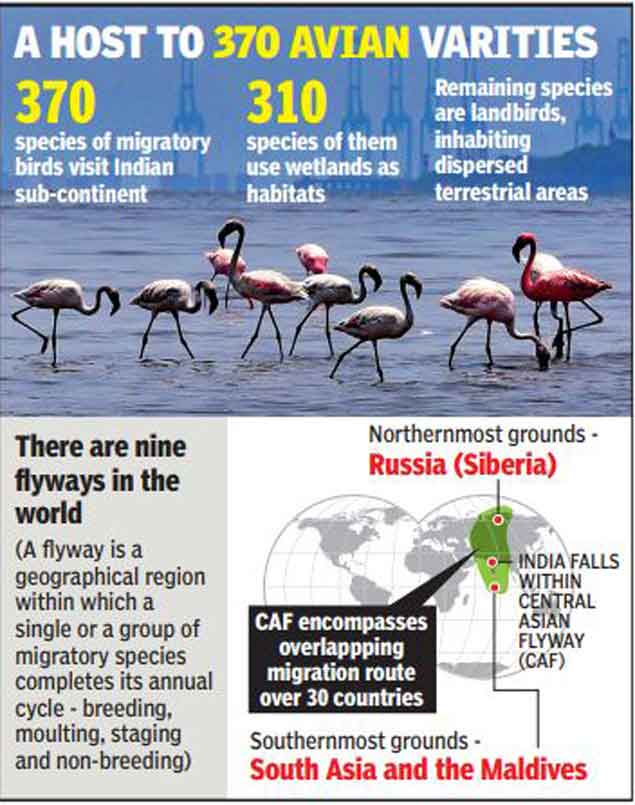Context
-
Recently, Winter migratory water birds using the central Asian flyway have started making a beeline to Punjab’s Harike Wetland.
Key Details
- Birds such as the Eurasian coot, Greylag goose, Bar-headed goose, Gadwall and the northern shoveler are the prominent ones that could be sighted at Harike.
- Among others species, Common Pochard, Spot-billed duck, Little Cormorant, Pied Avocet, Great Cormorant, Ferruginous Pochard, Common Teal, Black-tailed Godwit, Steppe Gull and Brown-headed Gull have been spotted in good numbers.
- The number of species such as Northern Lapwing, Pacific Golden Plover, Black-bellied Tern and Cotton Pygmy Goose species has been reducing over the years.
Back to basics
Central Asian Flyway
- Every winter, the birds make their way to India through the central Asian flyway, which covers a large continental area of Europe-Asia between the Arctic and Indian Oceans.
- Of the nine migratory bird flyways, India has three flyways (flight paths used by birds): the Central Asian flyway, East Asian flyway and East Asian–Australasian flyway.

- India has a strategic role in the flyway as it provides critical stopover sites to over 90% of the bird species known to use this migratory route.
Harike Wetland
- The Harike Wetland, one of the largest in northern India, is situated in Tarn Taran district & and Ferozepur district of Punjab.
- The Harike Wetland stands on the confluence of the the Beas and the Sutlej.
- It is home to birds visiting from as far as the Arctic and Siberia.
- It was accorded as a wetland in 1990, by the Ramsar Convention, as one of the Ramsar sites in India, for conservation, development and preservation of the ecosystem.
Back to Basics
Ramsar Convention
- The Convention on Wetlands of International Importance (better known as the Ramsar Convention) is an international agreement promoting the conservation and wise use of wetlands.
- It is the only global treaty to focus on a single ecosystem.
- The convention was adopted in the Iranian city of Ramsar in 1971 and came into force in 1975.
- Traditionally viewed as a wasteland or breeding ground of disease, wetlands actually provide fresh water and food and serve as nature’s shock absorber.
- Wetlands, critical for biodiversity, are disappearing rapidly, with recent estimates showing that 64% or more of the world’s wetlands have vanished since 1900.
- Major changes in land use for agriculture and grazing, water diversion for dams and canals and infrastructure development are considered to be some of the main causes of loss and degradation of wetlands.
CMS
- The CMS is an international agreement signed under the auspices of the United Nations Environment Programme in 1979 to conserve migratory species within their migratory ranges.
Migratory Species
- Migratory species threatened with extinction are listed on Appendix I of the Convention on the Conservation of Migratory Species of Wild Animals (CMS).
- India is a party to the convention.
CMS COP13
- Conservation of Migratory Species of Wild Animals (CMS) 13th Conference of Parties (CoP) was held in Gandhinagar, Gujarat, India from February 17-22-2020.
